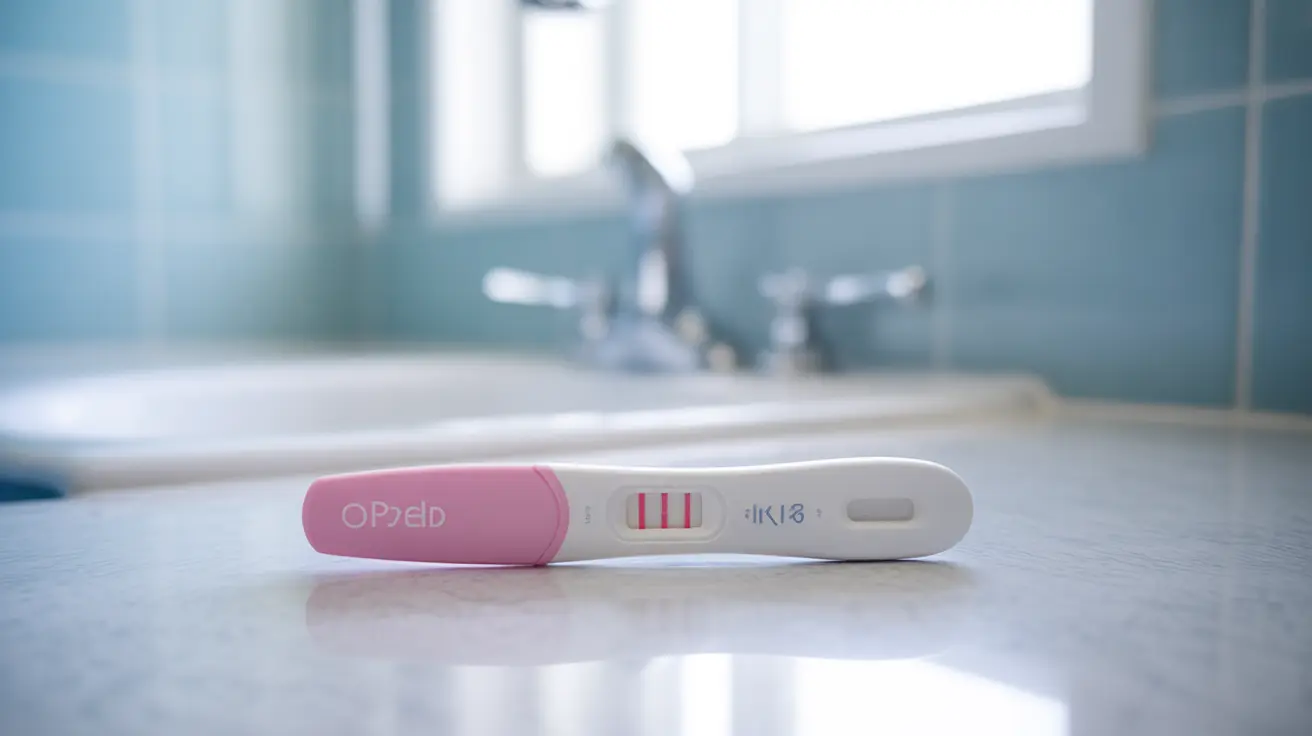When it comes to detecting pregnancy early, choosing the right pregnancy test can make all the difference in getting clear, reliable results. Pink dye pregnancy tests have become increasingly popular among women seeking accurate early pregnancy detection, and for good reason. These tests offer several advantages that make them a trusted choice for home pregnancy testing.
In this comprehensive guide, we'll explore how pink dye pregnancy tests work, their benefits compared to other options, and how to use them correctly for the most accurate results possible.
How Pink Dye Pregnancy Tests Work
Pink dye pregnancy tests operate by detecting human chorionic gonadotropin (hCG), commonly known as the pregnancy hormone, in your urine. When you're pregnant, your body begins producing hCG shortly after implantation, and levels typically double every 48-72 hours in early pregnancy.
These tests use special antibodies that react specifically with hCG, creating a visible pink line when the hormone is present. The test features two windows: a control line that confirms the test is working properly and a test line that indicates pregnancy when present.
Advantages of Pink Dye Tests
Pink dye pregnancy tests offer several notable benefits that set them apart from other testing options:
- Clearer results with less ambiguity
- Reduced likelihood of false-positive readings
- Better visibility compared to blue dye tests
- Less prone to confusing evaporation lines
- More sensitive to early pregnancy detection
Best Practices for Taking a Pink Dye Pregnancy Test
Timing Your Test
The best time to take a pink dye pregnancy test is first thing in the morning when your urine is most concentrated. This helps ensure the highest possible levels of hCG for detection. Wait until at least the first day of your missed period for the most reliable results.
Proper Test Administration
Follow these steps for the most accurate results:
- Read all instructions carefully before beginning
- Use first-morning urine if possible
- Place the test stick in the urine stream for exactly the recommended time
- Lay the test flat while developing
- Read results within the specified timeframe (usually 3-5 minutes)
Understanding Test Results
When interpreting your test results, remember that any visible pink line in the test window, even if faint, could indicate pregnancy. However, the line must appear within the test's recommended reading timeframe and should have a pink hue.
Avoiding Common Testing Mistakes
To ensure accurate results and avoid false readings, keep these important factors in mind:
- Don't read results after the recommended timeframe
- Avoid taking the test too early in your cycle
- Store tests at proper room temperature
- Check the expiration date before use
- Don't leave tests in direct sunlight or extreme temperatures
Frequently Asked Questions
How do pink dye pregnancy tests work to detect pregnancy hormone (hCG)?
Pink dye pregnancy tests contain antibodies that specifically bind to hCG in your urine. When hCG is present, these antibodies react and create a visible pink line in the test window, indicating a positive result.
What are the advantages of using pink dye pregnancy tests compared to blue dye tests?
Pink dye tests typically provide clearer results with less ambiguity than blue dye tests. They are less likely to show misleading evaporation lines and generally easier to interpret, especially when dealing with faint positive results.
How can I correctly interpret a faint pink line on a pregnancy test?
Any visible pink line that appears within the test's reading timeframe, regardless of how faint, typically indicates a positive result. However, the line should have a pink color and appear before the test window expires.
When is the best time to take a pink dye pregnancy test for accurate results?
The most accurate results come from testing first thing in the morning, using first-morning urine, and waiting until at least the first day of your missed period. This ensures optimal hCG concentration for detection.
How can I avoid evaporation lines and false positives when using a pink dye pregnancy test?
To avoid evaporation lines and false positives, read results within the specified timeframe (usually 3-5 minutes), don't leave the test sitting out for extended periods, and ensure you're following all instructions carefully. Only count lines that appear within the designated timeframe and have a pink color.




